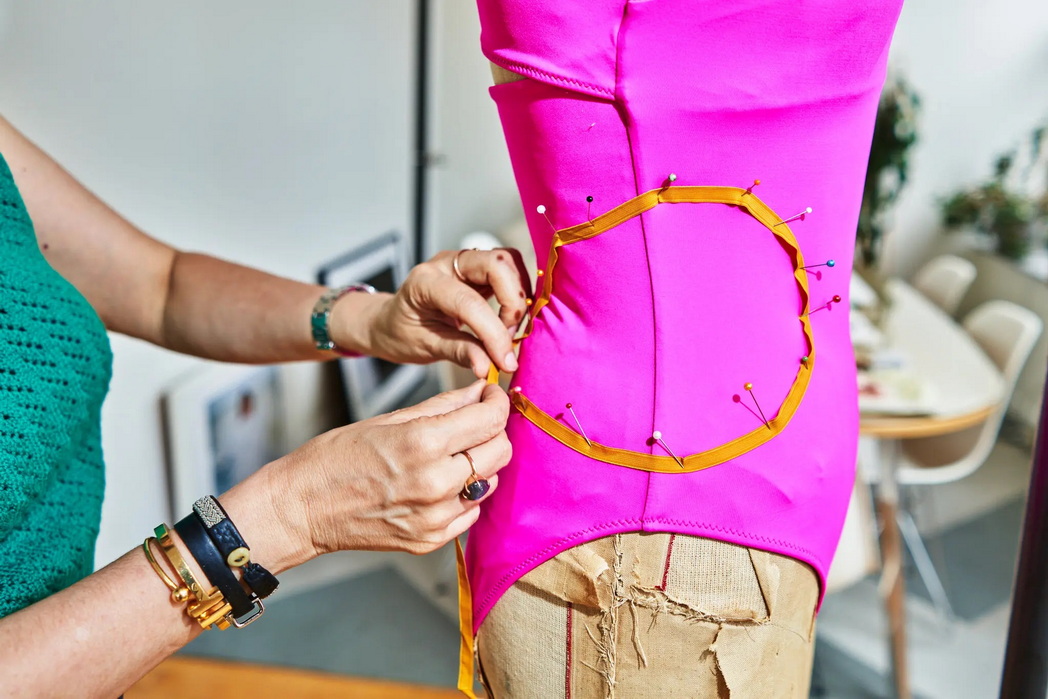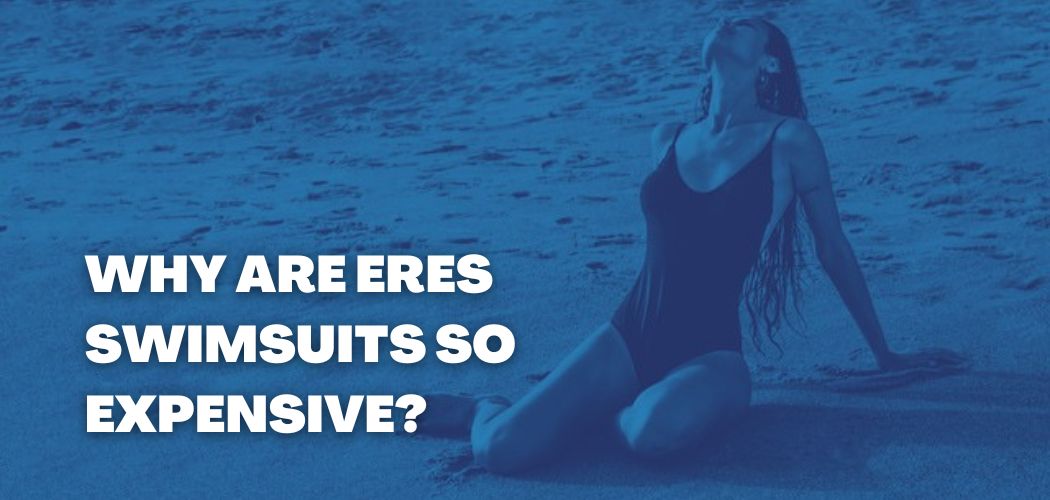Content Menu
● Factors Influencing Swimwear Cost
>> The Fabric Factor
>> Intricate Design and Construction
>> Fit and Sizing Challenges
>> Ethical Manufacturing and Labor Costs
>> Seasonality and Market Dynamics
>> Brand Reputation and Marketing
>> Sustainability and Innovation
>> The Economics of Small Pieces
>> Consumer Expectations and Perceived Value
● Quality and Durability of Swimwear
>> Why Durability Matters
● Innovations in Swimwear Fabric Technology
>> Advanced Fabrics
>> Performance Enhancements
● Popular Swimwear Brands
>> Top Swimwear Brands
>> What Makes a Brand Popular?
● Conclusion
● FAQs
>> Why are designer swimsuits so expensive?
>> Are expensive swimsuits worth it?
>> What should I look for in a good swimsuit?
Discover the surprising truth behind the hefty price tags on swimsuits with our list reasons why.
As summer approaches and beach season beckons, many of us find ourselves facing a familiar dilemma: the search for the perfect swimsuit. However, one aspect of this annual ritual often leaves shoppers puzzled and sometimes frustrated – the surprisingly high price tags attached to these seemingly small pieces of fabric. Why exactly are swimsuits so expensive? Let's dive into the various factors that contribute to the cost of swimwear and explore the complexities behind their production and pricing.

Factors Influencing Swimwear Cost
Have you ever wondered why some swimsuits are so expensive? The cost of swimwear can really vary, and there are several reasons for this. Let's dive into the factors that make swimsuits pricey!
The Fabric Factor
One of the primary reasons for the high cost of swimsuits lies in the specialized fabrics used in their construction. Unlike everyday clothing, swimwear must withstand unique and harsh conditions. It needs to be resistant to chlorine, saltwater, and sun exposure while maintaining its shape and color. This requires the use of high-performance materials such as nylon, polyester, and spandex blends, often enhanced with treatments for UV protection and quick-drying properties.
These technical fabrics are significantly more expensive than standard textiles used in regular clothing. The development and production of these materials involve advanced technologies and processes, which add to their cost. Moreover, the durability and performance of these fabrics are crucial for the longevity of the swimsuit, justifying the higher price point for quality pieces that can last multiple seasons.
Intricate Design and Construction
Swimwear design is a highly specialized field that requires a unique set of skills and expertise. Designers must create garments that are not only aesthetically pleasing but also functional and comfortable in water. This involves intricate pattern-making and construction techniques to ensure a perfect fit that stays in place during various water activities.

The construction of swimwear often involves complex seaming and reinforcement to prevent transparency when wet and to provide adequate support. Many high-end swimsuits feature built-in shapewear elements, padding, or boning, which require additional materials and labor. The small size of swimwear components also means that much of the work must be done by hand, increasing production time and cost.
Furthermore, swimwear often incorporates decorative elements such as beading, embroidery, or hardware, which not only add to the aesthetic appeal but also to the overall cost. These embellishments must be carefully selected and applied to withstand water exposure and frequent use.
Fit and Sizing Challenges
Achieving the perfect fit in swimwear is crucial, as these garments are worn in public and leave little room for error. Unlike other types of clothing, swimsuits must fit snugly without being too tight, stay in place during movement, and flatter the body's contours. This presents a significant challenge for manufacturers, who must develop and produce a wide range of sizes and styles to accommodate diverse body types.
The process of perfecting fit often involves multiple rounds of prototyping and testing, which adds to the development costs. Many brands also offer mix-and-match options for tops and bottoms, allowing customers to find their ideal combination. While this flexibility is appreciated by consumers, it complicates inventory management and can lead to higher prices to offset potential unsold stock.
Ethical Manufacturing and Labor Costs
In recent years, there has been a growing awareness of ethical manufacturing practices in the fashion industry, including swimwear production. Many consumers are now willing to pay more for swimsuits made under fair labor conditions, with workers receiving living wages and working in safe environments. This shift towards ethical production inevitably increases labor costs, which are reflected in the final price of the swimsuit.

Additionally, the specialized skills required for swimwear production mean that labor costs are generally higher compared to other garment types. The precision needed in cutting and sewing stretchy, delicate fabrics demands experienced workers, whose expertise commands higher wages.
Seasonality and Market Dynamics
The swimwear industry is highly seasonal, with peak demand concentrated in the months leading up to and during summer. This seasonality affects pricing in several ways. Manufacturers and retailers must recoup their investments and make profits within a relatively short selling window, which can lead to higher markups.
Moreover, the fashion-driven nature of swimwear means that styles can quickly become outdated. Brands need to constantly innovate and release new designs to stay competitive, spreading the costs of research, development, and marketing across a limited number of pieces. This constant cycle of innovation and the risk of unsold inventory contribute to higher prices.
Brand Reputation and Marketing
In the world of swimwear, brand reputation plays a significant role in pricing. Established luxury brands can command premium prices based on their name recognition and perceived quality. These brands often invest heavily in marketing campaigns, fashion shows, and celebrity endorsements, all of which are factored into the cost of their products.
Even for non-luxury brands, marketing expenses can be substantial. Creating appealing imagery for swimwear, often involving exotic location shoots and high-profile models, is costly. These expenses, along with advertising across various media channels, contribute to the overall price of swimsuits.
Sustainability and Innovation
As environmental concerns become more prominent, many swimwear brands are investing in sustainable practices and materials. This includes using recycled fabrics, implementing eco-friendly dyeing processes, and reducing water usage in production. While these initiatives are positive for the environment, they often come with higher costs, at least initially, which can be reflected in the price of the final product.
Innovation in swimwear technology also drives up costs. Brands are constantly developing new features such as improved sun protection, water-repellent finishes, and even smart fabrics that can monitor UV exposure. These advancements require significant investment in research and development, which is ultimately passed on to the consumer.

The Economics of Small Pieces
It's often puzzling to consumers why such small garments can be so expensive. However, the amount of fabric used is only a small part of the overall cost. The complexity of design, the quality of materials, and the labor involved in production are far more significant factors. In fact, the small size of swimwear components can sometimes increase costs, as they require more precise work and generate more waste in the cutting process.
Consumer Expectations and Perceived Value
Finally, consumer expectations play a role in swimwear pricing. Many people are willing to invest more in a swimsuit because it's a garment that is worn in public and often associated with vacations and special occasions. The perceived value of a well-fitting, flattering swimsuit that makes the wearer feel confident can justify a higher price point for many consumers.
Quality and Durability of Swimwear
When we talk about quality swimwear, we mean swimsuits that are made well and last long. One important thing is the stitching. Good stitching keeps the swimsuit together, so it does not fall apart after a few uses. If the seams are strong, then you can swim and play without worrying about rips.
The fabric used in swimwear is also very important. High-quality fabrics are soft but strong. They can stretch when you swim and dry quickly after you get out of the water. This is super helpful when you are at the beach or pool, so you don't stay wet for too long. Plus, some fabrics are made to block harmful sun rays, keeping your skin safer.
Another factor is the fit of the swimsuit. A good fit means that the swimsuit hugs your body comfortably without being too tight or too loose. This way, you can move freely, whether you are diving, jumping, or just relaxing by the water. So, when you think about quality swimwear, remember to check the stitching, fabric, and fit!
Why Durability Matters
Durability in swimwear is super important for many reasons. First, durable swimwear means it can handle lots of fun in the water. If your swimsuit can last through many swims, it saves you money in the long run. You won't have to buy new ones as often if you pick durable swimwear.
Think about it this way: when you spend money on a good-quality swimsuit, you are investing in something that will last. You can enjoy your time at the pool or ocean without worrying about it wearing out quickly. Plus, durable swimwear often looks better for longer. It won't fade or stretch out after just a few washes, so you can keep looking great during all your summertime adventures!
Innovations in Swimwear Fabric Technology
Swimwear has come a long way thanks to exciting innovations in fabric technology. These new materials are not just strong; they also make swimming easier and more fun. Let's take a look at what these advanced swimwear materials are and how they help swimmers.
Advanced Fabrics
Advanced fabrics are special types of materials that are designed to improve swimsuits. They are often lightweight and stretchy, which means they fit snugly without being too tight. Many swimsuits today are made from fabrics that dry quickly. This is important because no one wants to wear a heavy, soggy swimsuit after getting out of the water!
Some swimsuits use fabrics that can block harmful UV rays from the sun. This is great for protecting your skin while you enjoy a day at the beach or pool. There are also fabrics that are super soft and smooth, which helps reduce drag when you're swimming. This means you can glide through the water more easily!
Performance Enhancements
Fabric technology doesn't just make swimsuits look good; it also helps improve swimming performance and comfort. For example, some swimsuits are designed to help you swim faster by reducing water resistance. This is really helpful for competitive swimmers who want to win races!
Additionally, many new swimsuit materials are breathable and wick away moisture. This keeps you cool and comfortable, even on hot days. Some fabrics are even treated with special chemicals that help prevent odors. So, you can swim and play without worrying about smelling bad afterward!
Overall, these innovations in swimwear fabric technology make swimsuits not only better for swimming but also more enjoyable to wear. With all these improvements, it's no wonder that some swimsuits can be a bit more expensive. But for many, the benefits of these advanced materials are worth it!
Popular Swimwear Brands
When it comes to swimwear, there are many brands that people love. These brands are known for their stylish designs and comfortable fits. Let's take a look at some of the most popular swimwear brands and what makes them special.
Top Swimwear Brands
One of the most famous swimwear brands is Speedo. They are known for making high-quality swimsuits for competitive swimmers. Speedo swimsuits are designed to help swimmers move faster in the water. Another well-known brand is Billabong. They create stylish swimsuits and surfwear that are perfect for beach days. If you're looking for trendy and fun designs, you might want to check out Roxy. They have colorful swimsuits that girls love to wear while having fun in the sun.
For those who like a more luxurious feel, there are also designer swimsuits. Brands like Michael Kors and Versace create fancy swimwear that often comes with a higher price tag. These designer swimsuits are made with special materials and unique designs that stand out on the beach or by the pool.
What Makes a Brand Popular?
There are a few things that help a swimwear brand become popular. First, quality is very important. People want swimsuits that last a long time and feel great to wear. This is why brands that use durable materials often become favorites. Next, design plays a big role. Cool patterns and colors can make a swimsuit really appealing. Brands that keep up with current fashion trends attract more customers.
Marketing also helps. Some brands use social media and famous athletes to promote their swimsuits. When people see their favorite stars wearing a brand, they may want to buy it too. Overall, a mix of quality, stylish design, and smart marketing can help a swimwear brand stand out in a crowded market.
Conclusion
The high cost of swimsuits is the result of a complex interplay of factors, from the specialized materials and construction techniques to the challenges of fit, ethical manufacturing considerations, and market dynamics. While it may be frustrating to pay what seems like a high price for a small piece of fabric, understanding these factors can help consumers appreciate the value behind their swimwear purchases.
As the industry continues to evolve, with increasing focus on sustainability, innovation, and inclusive sizing, it's likely that swimwear will remain a relatively expensive category. However, for many, the perfect swimsuit is an investment in comfort, confidence, and style that extends far beyond its material worth.
Whether you choose to splurge on a high-end designer piece or hunt for a more budget-friendly option, remember that behind each swimsuit lies a world of design, technology, and craftsmanship. The next time you don your favorite swimwear for a day at the beach or by the pool, you'll have a deeper appreciation for the small but mighty garment that allows you to enjoy the water in style and comfort.
FAQs
Why are designer swimsuits so expensive?
Designer swimsuits can cost a lot more than regular swimsuits. This is because of several reasons. First, the brand name matters. Famous brands have a reputation for making high-quality products, and that can raise prices. Second, the design is often more unique and stylish. Designers spend a lot of time creating special looks that stand out. Lastly, the materials used in designer swimsuits are usually top-notch. They might be made from advanced fabrics that feel great and last longer. All these factors combine to make designer swimsuits more expensive.
Are expensive swimsuits worth it?
When you think about whether expensive swimsuits are worth it, consider the benefits. High-quality swimwear is often made to last. They don't fade or tear easily, which means you won't have to replace them as often. Plus, they usually fit better and feel more comfortable. This can make your time swimming or at the beach much more enjoyable. So, if you swim often or want something that looks and feels good, spending a little more on quality swimwear could be a smart choice.
What should I look for in a good swimsuit?
Choosing a good swimsuit can be fun! Start by looking at the materials. High-quality fabrics like lycra or spandex are stretchy and durable. Next, think about the fit. A good swimsuit should feel snug but not too tight. You want to be able to move freely. Lastly, consider the brand reputation. Well-known swimwear brands are often trusted for their quality. By focusing on these key points, you'll find a swimsuit that not only looks great but also lasts a long time.





































